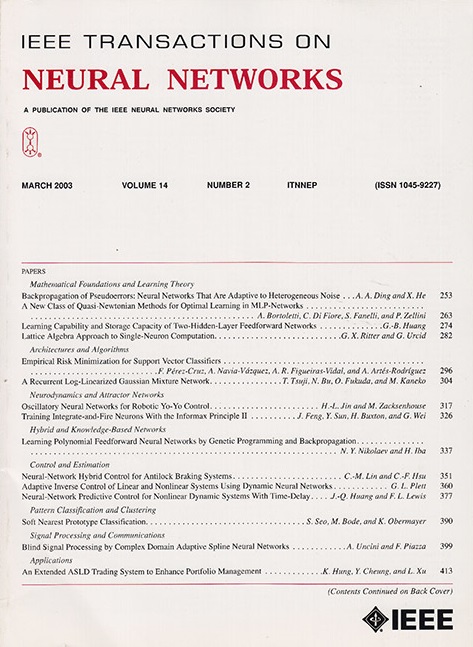A Unified Optimal Transport Framework for Cross-Modal Retrieval With Noisy Labels
IF 8.9
1区 计算机科学
Q1 COMPUTER SCIENCE, ARTIFICIAL INTELLIGENCE
IEEE transactions on neural networks and learning systems
Pub Date : 2025-04-30
DOI:10.1109/TNNLS.2025.3559533
引用次数: 0
Abstract
Cross-modal retrieval (CMR) aims to establish interaction between different modalities, among which supervised CMR is emerging due to its flexibility in learning semantic category discrimination. Despite the remarkable performance of previous supervised CMR methods, much of their success can be attributed to the well-annotated data. However, even for unimodal data, precise annotation is expensive and time-consuming, and it becomes more challenging with the multimodal scenario. In practice, massive multimodal data are collected from the Internet with coarse annotation, which inevitably introduces noisy labels. Training with such misleading labels would bring two key challenges—enforcing the multimodal samples to带噪声标签跨模态检索的统一最优传输框架
跨模态检索(Cross-modal retrieval, CMR)旨在建立不同模态之间的交互作用,其中有监督的跨模态检索由于其在学习语义类别判别方面的灵活性而逐渐兴起。尽管以前的监督CMR方法表现出色,但它们的成功很大程度上归因于良好注释的数据。然而,即使对于单模态数据,精确的注释也是昂贵且耗时的,并且在多模态场景中变得更具挑战性。在实际应用中,大量的多模态数据是通过粗糙的标注从互联网上收集的,这不可避免地引入了噪声标签。使用这种误导性标签进行训练将带来两个关键挑战:强迫多模态样本对齐错误的语义和扩大异构差距,从而导致检索性能差。为了应对这些挑战,本工作提出了UOT-RCL,这是一个基于最优传输(OT)的统一框架,用于稳健的CMR。首先,我们提出了一种基于部分OT的语义对齐方法来逐步纠正噪声标签,其中设计了一种新的跨模式一致成本函数来混合不同的模式并提供精确的运输成本。其次,为了缩小多模态数据的差异,提出了一种基于语义的关系对齐方法来推断语义层面的跨模态匹配。这两个组件都利用多模态数据之间的内在相关性来促进有效的成本函数。在三个广泛使用的CMR数据集上的实验表明,我们的UOT-RCL超越了最先进的方法,并显着提高了对噪声标签的鲁棒性。
本文章由计算机程序翻译,如有差异,请以英文原文为准。
求助全文
约1分钟内获得全文
求助全文
来源期刊

IEEE transactions on neural networks and learning systems
COMPUTER SCIENCE, ARTIFICIAL INTELLIGENCE-COMPUTER SCIENCE, HARDWARE & ARCHITECTURE
CiteScore
23.80
自引率
9.60%
发文量
2102
审稿时长
3-8 weeks
期刊介绍:
The focus of IEEE Transactions on Neural Networks and Learning Systems is to present scholarly articles discussing the theory, design, and applications of neural networks as well as other learning systems. The journal primarily highlights technical and scientific research in this domain.
 求助内容:
求助内容: 应助结果提醒方式:
应助结果提醒方式:


